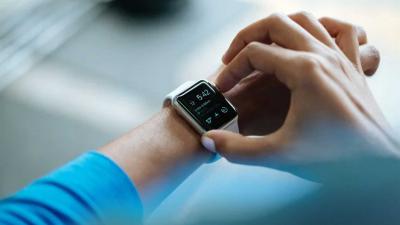Home situation gives a different picture
This publication on the use of the Verily Study Watch shows that measurements in the home situation show a different picture for many people than measurements in the hospital. This finding could have a huge impact on science and healthcare, where smart watches could provide an alternative to traditional hospital visits, allowing more frequent and more reliable assessments of how people are actually doing.
New methods
In 2016, Radboudumc and Verily, an Alphabet company that focuses on precision health, started the Customized Parkinson’s Study, a study involving more than 500 people with Parkinson’s disease. One of the goals was to develop new methods that can accurately map the severity of Parkinson’s disease. This is more important than ever, as several new treatment methods are under development whose effects must be measured objectively. Until now, this has been done almost exclusively by a doctor, but this has a number of drawbacks.
Control in hospital
‘We have known for more than 200 years that it is not possible to reliably assess the severity of Parkinson’s disease during a hospital assessment. A hospital visit is often experienced as a stressful event. Some symptoms, such as trembling, are made worse by this, but walking, for example, improves. This is not a good reflection of how things are going at home. In addition, it is labour-intensive: patients have to travel to the hospital and it takes a lot of manpower from doctors and scientists. You would prefer to measure people much more often, in an objective manner, and in their own living environment,’ says Bas Bloem, professor of Neurology at Radboudumc.
Verily Study Watch with Motion Sensors
The participants wore the Verily Study Watch, a multi-sensor research watch, for two to three years. Their motivation was great, says researcher Luc Evers of Radboudumc: ‘Even after years of use, people wear the watch on average for 21 hours a day, so that we can get a very complete picture of how the disease progresses at home,’ says Evers. ‘With the help of the motion sensors, we can map important Parkinson’s complaints, such as changes in the gait pattern and tremors. But thanks to other sensors, we can also look at less well-known – but certainly no less important – non-motor complaints. For example, into sleeping problems, changes in heart rate regulation and the effects of stress.’
Long follow-up of patients
Previous studies also looked at the added value of a smartwatch, but this new Parkinson’s tailor-made study contains several new elements. It is the largest Parkinson’s study on a wearable sensor worldwide, and people are followed for much longer than in previous studies. Data is continuously collected in the background. In addition, the participants perform various tests at specific times. These tests included stretching and resting the arms to measure trembling, walking for a while to measure arm swing, getting up from a chair to measure balance, and turning the hands to check for inertia. . Bloem: ‘The advantage is that you can carry out a neurological examination at a distance, as it were, while you know exactly which movements the participant is performing.’
Better picture in the home situation
The tests on the watch made it possible to reliably measure the core symptoms of Parkinson’s disease and the effects of medication in the home situation. Most striking was that the measurements in the home situation gave a different picture for many participants than those in the hospital. Evers: ‘All participants had also performed the same tests once in the hospital. The results of that one measurement often deviated from the weekly measurements in their home situation. We are convinced that results in the home situation provide a much more complete and accurate picture of the severity of Parkinson’s.’
Mapping disease progression
The next step is to see if the smart watch can be used to measure disease progression over a longer period of time. ‘We now have an instrument that can be used in the near future as a new digital thermometer for Parkinson’s. This allows us to better assess the effect of new, disease-inhibiting therapies, more objectively, over a longer period of time, and moreover in people’s homes,’ says Bloem.
–

